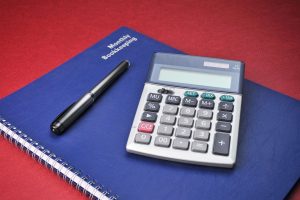
Your next step is to locate the common stock section on the balance sheet. The former refers to the largest number of shares the company can issue. One simple calculation for the number of shares in a firm comes from readily available information on a stock’s market capitalization. If you know the market cap of a company and its share price, then figuring out the number of outstanding shares is easy. Just take the market capitalization figure and divide it by the share price. The result is the number of shares on which the market capitalization number was based.

Authorized Shares vs. Outstanding Shares: An Overview
Founded in 1993, The Motley Fool is a financial services company dedicated to making the world smarter, happier, and richer. The outstanding shares figure is useful to know for an investor that is contemplating buying shares in a company. Dividing the number of shares to be purchased by the number of shares outstanding reveals the percentage of ownership that the investor will have in the business after the shares have been purchased. P/B is often used to value companies in the financial sector (i.e. banks) and is calculated by taking a company’s share price and dividing it by the book value per share. For example, the price-to-earnings (P/E) ratio calculates how much investors are paying for $1 of a company’s earnings by dividing the company’s share price by its EPS.
What Is Market Capitalization?
- A company is limited to issuing only the quantity of shares it’s authorized to issue.
- Using these resources not only ensures the accuracy of calculations but also helps in generating well-informed, strategic investments.
- With the $50 million in cash, in theory it could instantly repurchase 5 million shares at $10 each.
- Large lot trades by investors of closely held shares could significantly affect the stock’s price and the stock’s volatility.
- This number is crucial as it reflects the company’s total equity ownership available to investors.
The equity part of the balance sheet reports the overall number of outstanding shares. Information is also available in the footnotes to the financial statements and the management’s discussion and analysis (MD&A) part of the filings. Stock repurchases (stock buybacks) occur when a company purchases its shares from the market. This lowers the number of outstanding shares as the company purchases a portion of its stock. The remaining shares increase in value because the same earnings are now distributed among fewer shares when a company repurchases its shares from the market. To determine the outstanding shares, you must deduct the number of repurchased or retired shares from the total number of shares issued by the company.

Local stock exchanges
- There are also considerations for a company’s outstanding shares if they’re blue chips.
- Most notably, short interest usually is measured as a percentage of the float, rather than shares outstanding.
- The ownership of outstanding shares spreads among several shareholders, with no single shareholder controlling the company.
- The number of shares outstanding can (and usually does) fluctuate over time.
- The company’s outstanding shares remain in circulation, as the company has neither repurchased, retired, nor removed them from the market.
Public companies file financial reports with regulatory bodies such as the U.S. Companies either file a 10-K (annual report) or a 10-Q (quarterly report). Learn about stocks that could split in 2025 and why a company might decide to do a stock Accounting Periods and Methods split.


Corporations have a certain number of total number of shares outstanding authorized shares of common or preferred stock. However, just because a corporation is authorized to issue stock doesn’t mean that it has to issue all of those shares. Most of the time, corporations will tell investors how many shares of stock they’ve issued, but sometimes, it’s helpful to be able to calculate those numbers on your own. Below, you’ll find some tips on a couple of different calculation methods to determine the number of shares of stock a company has.
But the company, Bookkeeping for Etsy Sellers as in our example above and using the treasury stock method, has 5 million shares linked to options and warrants. Let’s assume the company also has $500 million in convertible debt with a conversion price of $5. Assume that Company A has 100 million shares outstanding and a trading price of $10. It also has 10 million stock options outstanding with an exercise price of $5. In other words, the treasury stock method accounts for the cash that will come in from option and warrant exercise, and assumes that the cash received will offset a portion of the shares issued. Treasury shares are the stocks a company bought back from investors but haven’t canceled.
How To Calculate Weighted Average Shares Outstanding
It helps in calculating key financial ratios and understanding the company’s ownership distribution. The profit and loss statements in nearly every corporate earnings press release will include both basic and diluted shares outstanding. Those instruments can be “in the money” if the exercise price — the price designated for the stock by the option or warrant — is below the stock’s trading price. The same is true for convertible debt, which allows holders to either be repaid in cash or convert the debt into equity at a pre-set per-share price. And if these instruments are in the money, they represent current ownership of the company, even if technically the shares underlying the options, warrants or debt haven’t yet been issued. The primary distinction between issued and outstanding shares is that issued shares comprise both outstanding and treasury shares, whereas outstanding shares solely include shareholder-owned shares.
How Outstanding Shares are impacted by Stock Buybacks and issuances?
- Outstanding shares decrease if the company buys back its shares under a share repurchase program.
- Websites like Yahoo Finance and Google Finance provide detailed financial data, including shares outstanding, for a vast array of companies.
- Importantly, the number of shares outstanding is dynamic and fluctuates over time.
- The company has 4.32 billion authorized common shares, of which 3,119,843,000 have been issued as of December 31, 2014.
- Heavy trading by closely held shareholders could also affect the stock’s weighting impact in free float capitalization indexes.
Companies can use the float to calculate a company’s free float market cap by multiplying the share price by the total number of publicly available shares. A company’s number of shares outstanding is used to calculate many widely used financial metrics. Market capitalization — share price times number of shares outstanding — and EPS are both computed using a company’s number of outstanding shares.




اخر التعليقات